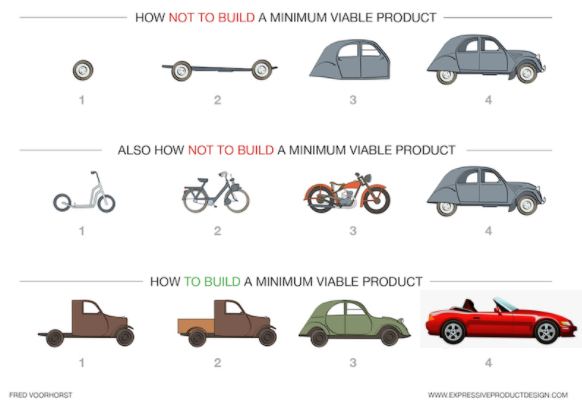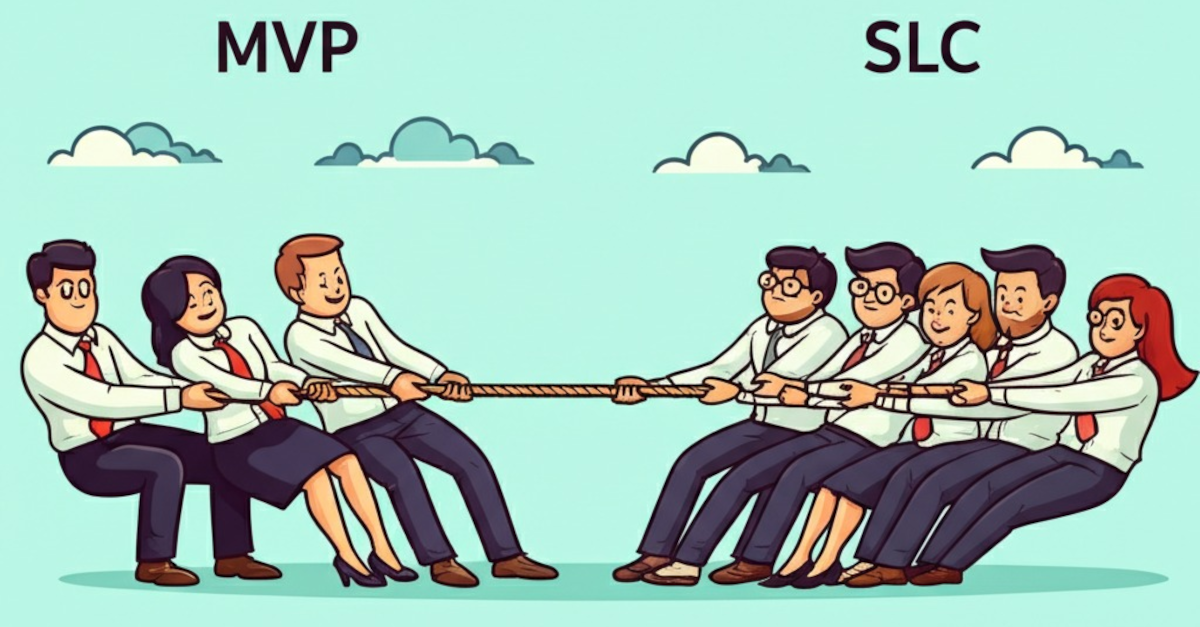Product development is a balancing act: move quickly, but deliver something users truly value. For years, the Minimum Viable Product (MVP) was the gold standard: build fast, launch, and learn from real feedback.
As user expectations rise and markets grow more competitive, is the MVP still up to the task? Or is it time to embrace an approach that prioritise a polished, delightful experience from the start?
Here’s my perspective on why “good enough” isn’t cutting it anymore and how we can build products that win hearts and minds from day one.
The MVP: A Classic That’s Showing Its Age
The MVP, rooted in Lean Startup principles, was designed to get a functional product to users quickly. The goal was clear: test assumptions, gather feedback, and iterate without burning through time or resources. It’s about finding what customers need, not guessing what they might want.
The catch? “Minimum” was never meant to mean “mediocre”. Too often, the MVP’s “launch early, even if it’s rough” mantra led to products that felt rushed, buggy, unpolished, or outright frustrating. Instead of sparking excitement, these releases risked alienating users and denting brand credibility. Even Sam Altman, former president of Y Combinator, has expressed regret over the advice he gave startups during his tenure, particularly around rushing products to market. In a candid moment, he reflected on how some of his guidance may have led founders astray 1:
Today’s Users Demand More
The market has shifted, and users aren’t as forgiving as they once were. Here’s why the MVP’s bare-bones approach is losing ground:
A Broader Audience: Early tech adopters were often willing to tolerate glitches for the sake of innovation. Today, digital products reach everyone from tech novices to seasoned professionals. If an app feels clunky or confusing, users abandon it instantly.
Trust Drives Loyalty: With countless alternatives at their fingertips, users expect a polished experience from the first interaction. A lacklustre debut can erode trust and harm a company’s reputation, especially when competing against established players.
Non-Negotiable Reliability: Beyond design and features, users demand security and stability. Whether it’s a consumer app or a business tool, a product that crashes or compromises data is a non-starter. Some areas are slightly more forgiving than others, but let me tell you if it involves money it better well work!
MVUP: A Smarter Take on MVP
The MVP’s biggest flaw lies in misinterpreting “viable.” Viable doesn’t mean barely functional, it means usable and valuable. This has sparked interest in a refined concept: the Minimum Viable Usable Product (MVUP).
An MVUP keeps the MVP’s focus on speed and learning but raises the bar with a polished, user-friendly experience. It delivers meaningful feedback without sacrificing quality or risking brand damage.
 How To Build an MVP 2
How To Build an MVP 2
SLC: The Future of Product Launches
To truly stand out, I believe we need to go beyond “usable” and aim for Simple, Lovable, Complete (SLC). This approach ensures a product delights users from the first touchpoint, even with a focused scope. Let’s break it down:
- Simple: Strip away complexity. The product doesn’t need every feature, but what’s there should be intuitive and deliver clear value. Early Google Docs, for example, offered fewer features than Microsoft Word but excelled with straightforward, realtime collaboration.
- Lovable: A lovable product creates an emotional connection. Through elegant design, a relatable brand, or a deep understanding of user needs, it turns users into advocates. Companies like Dropbox and WhatsApp launched with minimal features but won users over with delightful experiences.
- Complete: Even in its first iteration, the product should feel finished within its scope. No broken features, no placeholders, just a cohesive, reliable experience that works as promised.
SLC may require more upfront investment, but it drives stronger adoption, builds brand loyalty, and reduces the need for costly fixes later.
AI’s Role: Redefining Product Development
No article or social media post feels complete these days without a nod to artificial intelligence, and for good reason! Far from dystopian fears, AI is empowering teams to build better products faster, raising the bar for what users expect from even the earliest releases.
Models like OpenAI’s ChatGPT, Google’s Gemini, Anthropic’s Claude, and xAI’s Grok provide powerful APIs that let developers weave sophisticated text, image, video, and speech capabilities into products with remarkable speed. From natural language interfaces to dynamic image generation and conversational voice features, these tools make seamless, intelligent experiences more accessible than ever.
AI’s impact goes beyond features, it’s transforming how teams plan products. Large language models can distill brainstorming sessions, user feedback, and market data into clear, actionable insights, capturing the collective wisdom of a team in moments. This ensures products are designed with users at the heart from day one. Take Google’s Stitch, for example, which leverages Gemini to create UI designs with HTML and CSS code, exportable directly to Figma. Tools like these streamline the creation of polished, functional interfaces, redefining what “minimum” means in product development.
When AI enables such high-quality, user-centric products to come together so quickly, anything less feels like a letdown. A product that’s rough around the edges misses the mark in a world where sophistication, reliability, and delight are within reach. The baseline for a viable product now demands a level of polish that matches AI’s potential to elevate every touchpoint.
The Way Forward: Build for the Long Game
Product-market fit is a journey, not a finish line. Companies like Amazon, evolving from an online bookstore to a cloud and AI powerhouse, or Slack, pivoting from gaming to workplace communication, show the power of continuous adaptation. Whether you choose MVP, MVUP, or SLC depends on your goals, market, and users. But one thing is certain: putting the customer experience first is the key to lasting success.
What’s your take? Have you leaned on MVP, MVUP, or SLC in your own projects, and what’s worked best for delighting your users? Are there tools, AI-driven or otherwise, that have helped you deliver products that truly shine? Share your experiences over on the LinkedIn version of this article!
